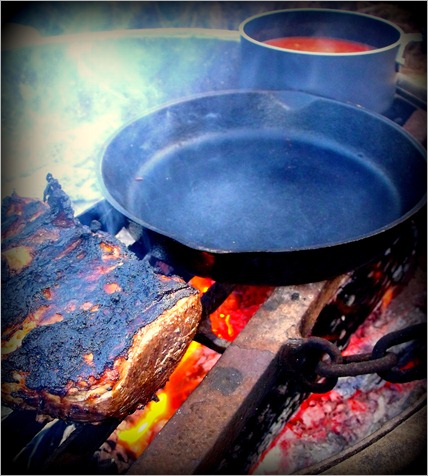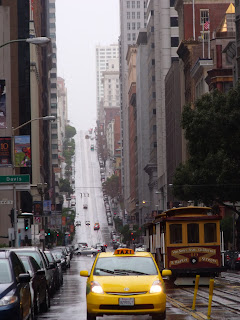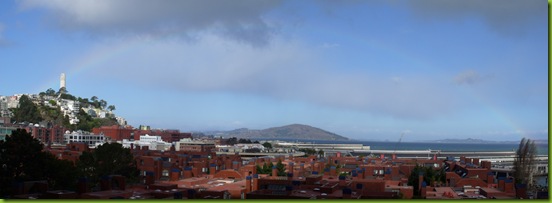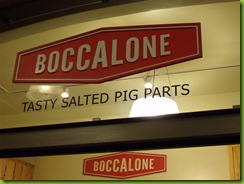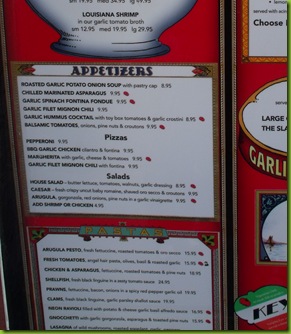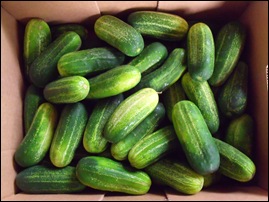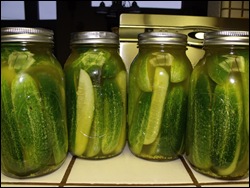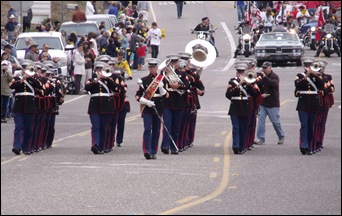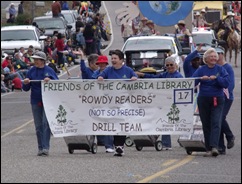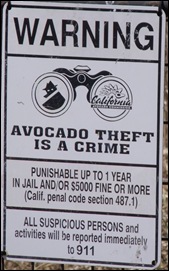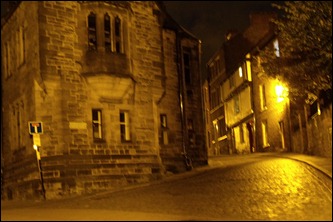 Some places are inherently spooky. Much of upland Britain is. From the abandoned Roman forts of Northumberland and Cumbria where, once upon a time, young men from places now called Italy, Iraq and Turkey must have wondered why the hell they joined, as they stood sandal-clad, peering into the freezing mist and asking themselves whether or not the Celts were going to try to hack them to death today, to the Lancashire dales where stories of witch trials are repeated to this day. Lots of the Scottish highlands have eeriness built into the scenery, where tales of 17th-century clan massacres and 18th-century battles are blended with a landscape built of sheer-walled glens and thin soil to create an atmosphere which suggests the very hills are watching.
Some places are inherently spooky. Much of upland Britain is. From the abandoned Roman forts of Northumberland and Cumbria where, once upon a time, young men from places now called Italy, Iraq and Turkey must have wondered why the hell they joined, as they stood sandal-clad, peering into the freezing mist and asking themselves whether or not the Celts were going to try to hack them to death today, to the Lancashire dales where stories of witch trials are repeated to this day. Lots of the Scottish highlands have eeriness built into the scenery, where tales of 17th-century clan massacres and 18th-century battles are blended with a landscape built of sheer-walled glens and thin soil to create an atmosphere which suggests the very hills are watching.
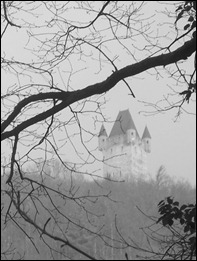 Coastal California just isn’t like that. It has many distinctive qualities, and while small-town eccentricity certainly is a phenomenon of the Central Coast, spookiness isn’t. California’s just not a very spooky place. It isn’t New England or Transylvania, whose genuine history has been forged into mythology by gothic writers. It has no Bram Stoker to populate the historic buildings with undead aristocrats, nor have the old Missions been commandeered by an H. P. Lovecraft to house ancient and bloodthirsty deities, and so our imaginations do not raise the hairs on the back of our necks when we think about Californian scenes. Joss Wheedon, of course, put vampires for Buffy to slay in Sunnydale, which was a fictional Californian beach town- but that was the very point. It was supposed to be unusual place for a portal into hell, so they could give a more distinctive flavour to what would otherwise have just been a nice little coming-of-age series for 90s teens. Buffy was like Dawson’s Creek with a side order of demons, rather than Sleepy Hollow with Added Adolescent Angst. California’s just not very spooky.
Coastal California just isn’t like that. It has many distinctive qualities, and while small-town eccentricity certainly is a phenomenon of the Central Coast, spookiness isn’t. California’s just not a very spooky place. It isn’t New England or Transylvania, whose genuine history has been forged into mythology by gothic writers. It has no Bram Stoker to populate the historic buildings with undead aristocrats, nor have the old Missions been commandeered by an H. P. Lovecraft to house ancient and bloodthirsty deities, and so our imaginations do not raise the hairs on the back of our necks when we think about Californian scenes. Joss Wheedon, of course, put vampires for Buffy to slay in Sunnydale, which was a fictional Californian beach town- but that was the very point. It was supposed to be unusual place for a portal into hell, so they could give a more distinctive flavour to what would otherwise have just been a nice little coming-of-age series for 90s teens. Buffy was like Dawson’s Creek with a side order of demons, rather than Sleepy Hollow with Added Adolescent Angst. California’s just not very spooky.
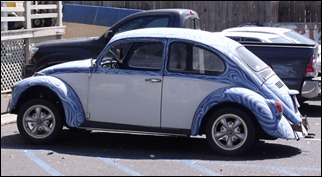 For a start, it’s still in the eighties in San Luis Obispo. Although the nights are cutting in, there are avocados ripening on the trees. There are Cayucos oranges in the shops fresh off the trees. In Newcastle at the moment it’s in the forties. California’s also not a desolate place, like northern Britain, or 18th-Century upstate New York. It’s rolling golden hills, not misty, deserted glens. It’s cattle country and vineyards. It’s hard to be freaked out by a landscape which contains the ingredients of a future vintage Zinfandel and filets mignons dished up at $40 a plate.
For a start, it’s still in the eighties in San Luis Obispo. Although the nights are cutting in, there are avocados ripening on the trees. There are Cayucos oranges in the shops fresh off the trees. In Newcastle at the moment it’s in the forties. California’s also not a desolate place, like northern Britain, or 18th-Century upstate New York. It’s rolling golden hills, not misty, deserted glens. It’s cattle country and vineyards. It’s hard to be freaked out by a landscape which contains the ingredients of a future vintage Zinfandel and filets mignons dished up at $40 a plate.
So Californians don’t have nature on their side when it comes to creating a Halloween atmosphere, but, as the end of October comes round, it certainly does not mean they’re not going to try. Certainly in Cambria, where they’ll have a community festivity at the drop of a hat (and they’ll drop the hat themselves), they got into the spirit early. The Cambria Scarecrow and Harvest Festival has been in full swing since the beginning of the month. The festival is in aid of the Cambria Historical Society. The community throws themselves into it; over 200 scarecrows infested Cambria this October, and they’re all online at the above site. From Captain Jack Sparrow to the Headless Horseman there is a wide range of ideas, all the work of locals and many produced by kids. Personally, I don’t think you need to invoke a Johnny Depp film to make a scarecrow scary. This pair on the right look as if they’d pry themselves free of their stakes and strangle you on a whim.
community festivity at the drop of a hat (and they’ll drop the hat themselves), they got into the spirit early. The Cambria Scarecrow and Harvest Festival has been in full swing since the beginning of the month. The festival is in aid of the Cambria Historical Society. The community throws themselves into it; over 200 scarecrows infested Cambria this October, and they’re all online at the above site. From Captain Jack Sparrow to the Headless Horseman there is a wide range of ideas, all the work of locals and many produced by kids. Personally, I don’t think you need to invoke a Johnny Depp film to make a scarecrow scary. This pair on the right look as if they’d pry themselves free of their stakes and strangle you on a whim.
 Scarecrows mercifully aside, we come to Californians’ individual efforts to increase the amplitude with which one’s spine tingles, and the frequency with which one receives the willies. Of course, there are worse places to start than with an inflatable undead pirate ship, as I’m sure you will agree, but I know you will be just as shocked as I was to learn that, given the excuse, some people go totally over the top. One lady in Cambria has decorated her house with inflatable ghosts, a skeletal pirate climbing a 30ft mast, thirty or forty Styrofoam tombstones, three fog machines, dry ice, a custom made wrought iron fence to which her husband has specially welded skulls on every fifth spike, and a mural on her garage door (this year, she says, it’s going to be a mad scientist’s laboratory). She has to start decorating in mid-September to be done in time for October 31st, and last year she kept a tally of trick-or-treaters which topped out at 843 on the night. Her neighbour across the road is barely more restrained:
Scarecrows mercifully aside, we come to Californians’ individual efforts to increase the amplitude with which one’s spine tingles, and the frequency with which one receives the willies. Of course, there are worse places to start than with an inflatable undead pirate ship, as I’m sure you will agree, but I know you will be just as shocked as I was to learn that, given the excuse, some people go totally over the top. One lady in Cambria has decorated her house with inflatable ghosts, a skeletal pirate climbing a 30ft mast, thirty or forty Styrofoam tombstones, three fog machines, dry ice, a custom made wrought iron fence to which her husband has specially welded skulls on every fifth spike, and a mural on her garage door (this year, she says, it’s going to be a mad scientist’s laboratory). She has to start decorating in mid-September to be done in time for October 31st, and last year she kept a tally of trick-or-treaters which topped out at 843 on the night. Her neighbour across the road is barely more restrained:

Need I draw the reader’s attention to the menacing inflatable cat twice the height of the SUV in the driveway? I imagine it’s a rare 8-year old Cambrian who isn’t experiencing symptoms of PTSD by the end of the first week in November.

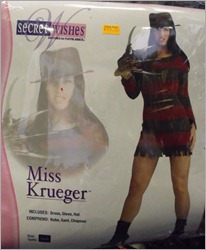 San Luis Obispo, being a university town, has its own take on the season. Its economy caters to a large population of young adults with a relatively high percentage of disposable income, and, shall we say, their own special agenda. Therefore we get female costumes like Pocahottie and Miss Krueger on the left. I particularly like this one because I felt that the one flaw in the Nightmare On Elm Street films was that Freddy just didn’t look like he was going to put out, and that’s what I look for in an undead fictional serial killer.
San Luis Obispo, being a university town, has its own take on the season. Its economy caters to a large population of young adults with a relatively high percentage of disposable income, and, shall we say, their own special agenda. Therefore we get female costumes like Pocahottie and Miss Krueger on the left. I particularly like this one because I felt that the one flaw in the Nightmare On Elm Street films was that Freddy just didn’t look like he was going to put out, and that’s what I look for in an undead fictional serial killer.

 Gentleman’s costumes are equally subtle and tend either towards the unabashedly dorky (Darth Vader, Harry Potter) or humour of the “That’s what she said!!!” variety. On the right we have a One Night Stand (it’s funny ‘cos he’s a Night Stand! He’s a One Night Stand!) and also a gynaecologist's coat. How do we know it’s a gynaecologist’s coat, rather than the lab coat of, say, a cardiologist or dental technician? Because it’s got “Howie Feltersnatch M.D” printed on it! HONK! HONK! Ah, Student Humour. Like Adult Humour before it’s fully mature.
Gentleman’s costumes are equally subtle and tend either towards the unabashedly dorky (Darth Vader, Harry Potter) or humour of the “That’s what she said!!!” variety. On the right we have a One Night Stand (it’s funny ‘cos he’s a Night Stand! He’s a One Night Stand!) and also a gynaecologist's coat. How do we know it’s a gynaecologist’s coat, rather than the lab coat of, say, a cardiologist or dental technician? Because it’s got “Howie Feltersnatch M.D” printed on it! HONK! HONK! Ah, Student Humour. Like Adult Humour before it’s fully mature.
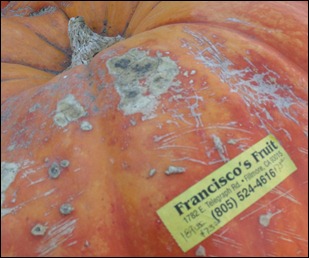 So what are we doing to raise the Californian Spookiness Quotient? We went to the Giant Pumpkin Shop, of course. For us, that meant Francisco’s Fruits in Fillmore, CA. There, pumpkins and squashes of all sizes, colours, shapes and descriptions may be found. Stacey had been there two years ago and filled the car with what can only be described as Ridiculously Bloody Huge Pumpkins. The biggest one when we went this weekend (we left it late) was a relative tiddler, weighing in at a comparatively svelte 189lbs.
So what are we doing to raise the Californian Spookiness Quotient? We went to the Giant Pumpkin Shop, of course. For us, that meant Francisco’s Fruits in Fillmore, CA. There, pumpkins and squashes of all sizes, colours, shapes and descriptions may be found. Stacey had been there two years ago and filled the car with what can only be described as Ridiculously Bloody Huge Pumpkins. The biggest one when we went this weekend (we left it late) was a relative tiddler, weighing in at a comparatively svelte 189lbs.
We went for form and finesse rather than size. Stacey described the procedure of pumpkin shopping to me. Firstly,you look round the shop- pictured below is not Francisco’s, but another patch in Fillmore where we stopped before moving on. It gives you some idea of what we’re talking about:
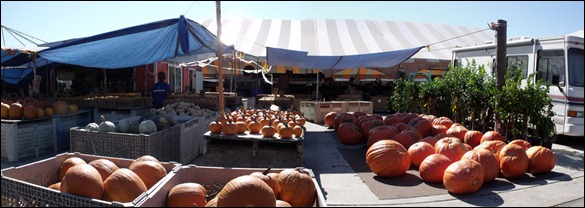

Eventually, you find the perfect pumpkin. She tells me that you get a feeling all over; in fact it’s more than a feeling in some ways- more like a whole-body event- which imparts to you the certain knowledge that there is no way on Earth you can live without this very pumpkin. Stacey, you see, is an ardent and evangelical cucurbitaphile. I didn’t feel quite this way myself, but once or twice Stacey was overcome by an almost epiphanic demeanour (see right).
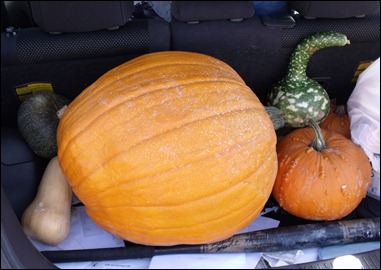 Pumpkins and squashes and gourds; oh my! We saw striped ones and knobbly ones, bendy ones, fat ones and tall ones, in the universal colours of autumn- orange, green and gold. Stacey eventually went for one of the more moderately sized (57lb) pumpkins which had fine emerald-green veins streaking down from the stem, and picked up a similar 62-pounder for her mother. I went for a small pumpkin of a variety which has knobbly little bumps running down it. There are a lot of stencils around which I might make use of. I intend to carve into it an expression which suggests it wants to tear your face off. For the kiddies, you know.
Pumpkins and squashes and gourds; oh my! We saw striped ones and knobbly ones, bendy ones, fat ones and tall ones, in the universal colours of autumn- orange, green and gold. Stacey eventually went for one of the more moderately sized (57lb) pumpkins which had fine emerald-green veins streaking down from the stem, and picked up a similar 62-pounder for her mother. I went for a small pumpkin of a variety which has knobbly little bumps running down it. There are a lot of stencils around which I might make use of. I intend to carve into it an expression which suggests it wants to tear your face off. For the kiddies, you know.
P.S. : I had intended this to be the end of the post, but in doing research for the last paragraph I came across two things. Firstly, a lot of really, really lame pumpkin stencils. Funny faces whose use would be an insult to the squash you’re carving. Then, there was this: http://www.extremepumpkins.com/
I shall leave you with a quotation from the home page:
“At what point did the carving of pumpkins turn into a "cute" event? When did boys stop carving pumpkins and moms start? Where did we lose touch with one of the years coolest events?
Today we will seize back this ritual. Today is the day we throw away those safe, cute carving tools. Today we will buy a big, ugly, pumpkin so large one man cannot lift or move it. Today. We will carve that sumbitch into something ugly and plop it on the front porch. October 31st we will light it brightly enough to give visiting children suntans.
Pumpkin carving is reborn!”
![1601653_690e54f3[1] 1601653_690e54f3[1]](http://lh4.ggpht.com/-kAoNZkqVHk8/UDaszR4sU1I/AAAAAAAAATQ/ORdVHOg_sqY/1601653_690e54f3%25255B1%25255D_thumb%25255B4%25255D.jpg?imgmax=800) By the way, these terms differ locally across America to a certain extent too. It’s no wonder that when I came over here and tried grilled tri-tip, the Central Coast’s gift to the food world, I had a hell of a time trying to get the butcher back home to reproduce the cut. It’s only in the past fifteen to twenty years that the cut has become known outside the Central Coast and the further eat you go, the less well-known it becomes. I would argue that Oliver and Eden, in the Grainger Market in Newcastle (see left), was one of the better butcher’s I used to shop at. So, knowing, as everyone with a barbecue between Ventura and Monterrey does, that tri-tip is from the bottom sirloin, I went to Oliver and Eden and confidently explained what I wanted. The butcher overcame his blank look as quickly as he could, and confidently explained that I was making, not to put too fine a point on it, no sense whatsoever. it took two return trips, with printed material and cow diagrams and incredible amounts of persistence an patience by the butcher, to get a tri-tip. It was worth it.
By the way, these terms differ locally across America to a certain extent too. It’s no wonder that when I came over here and tried grilled tri-tip, the Central Coast’s gift to the food world, I had a hell of a time trying to get the butcher back home to reproduce the cut. It’s only in the past fifteen to twenty years that the cut has become known outside the Central Coast and the further eat you go, the less well-known it becomes. I would argue that Oliver and Eden, in the Grainger Market in Newcastle (see left), was one of the better butcher’s I used to shop at. So, knowing, as everyone with a barbecue between Ventura and Monterrey does, that tri-tip is from the bottom sirloin, I went to Oliver and Eden and confidently explained what I wanted. The butcher overcame his blank look as quickly as he could, and confidently explained that I was making, not to put too fine a point on it, no sense whatsoever. it took two return trips, with printed material and cow diagrams and incredible amounts of persistence an patience by the butcher, to get a tri-tip. It was worth it.